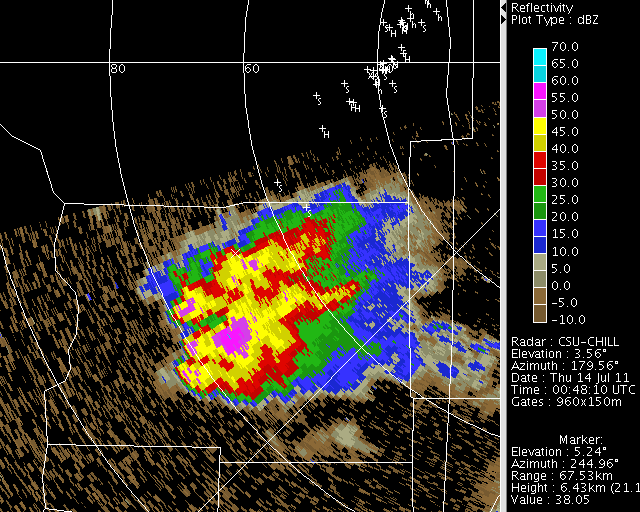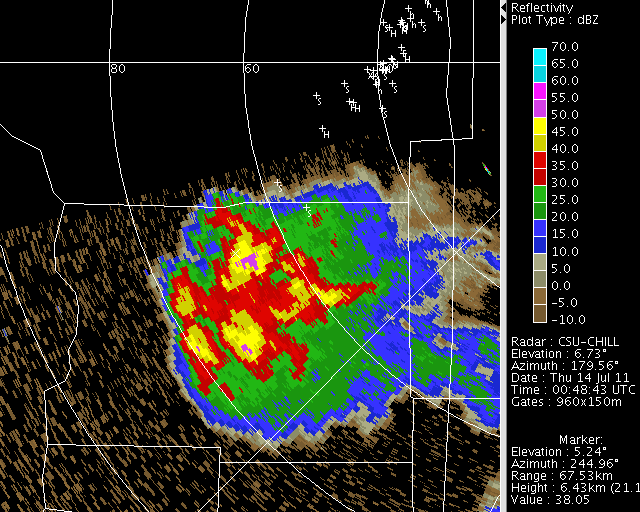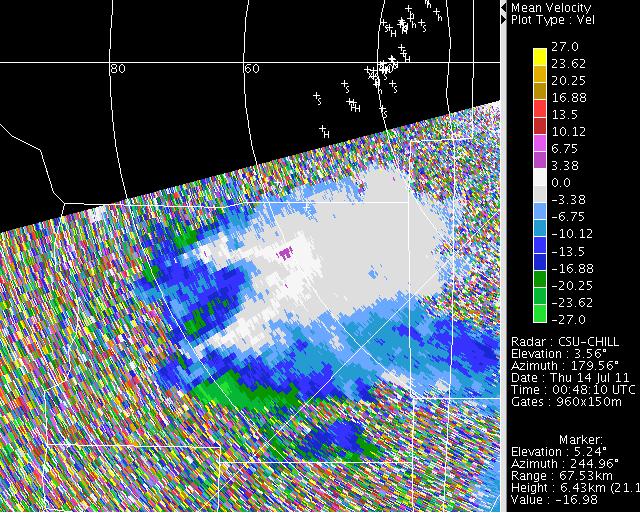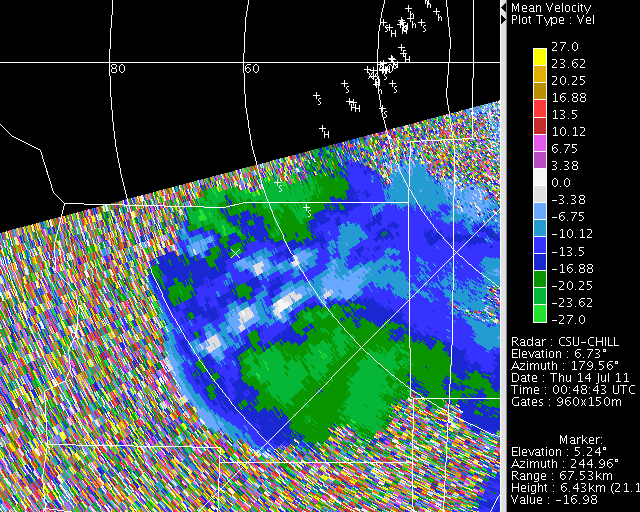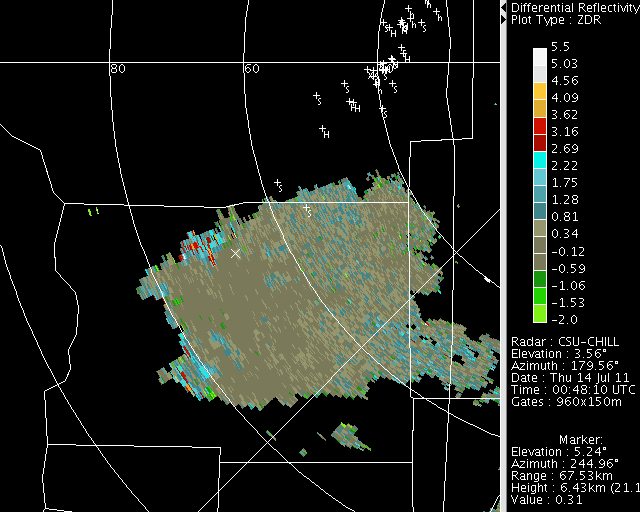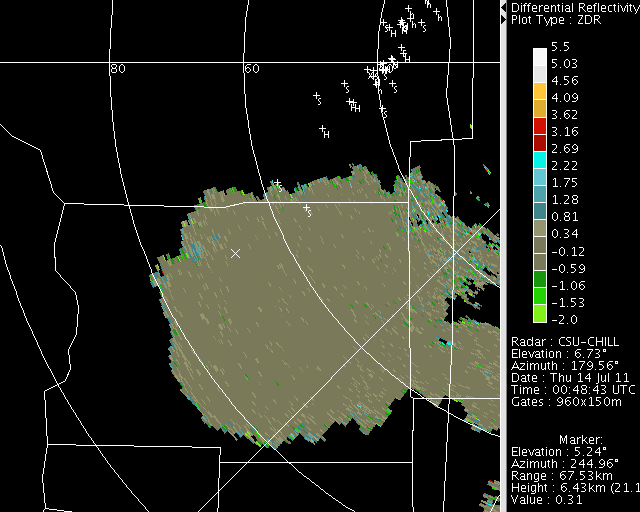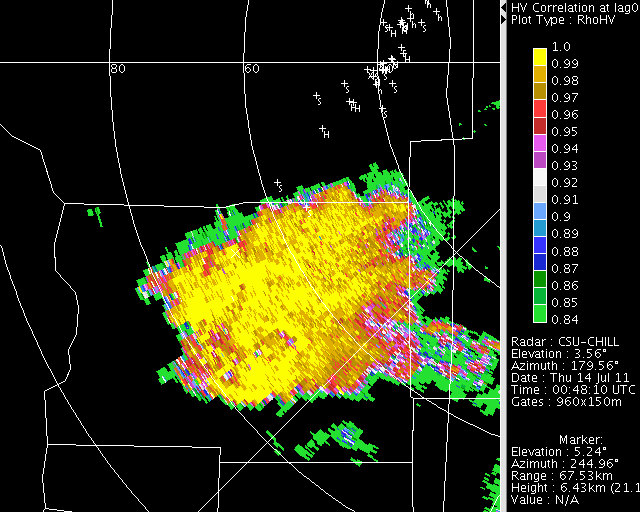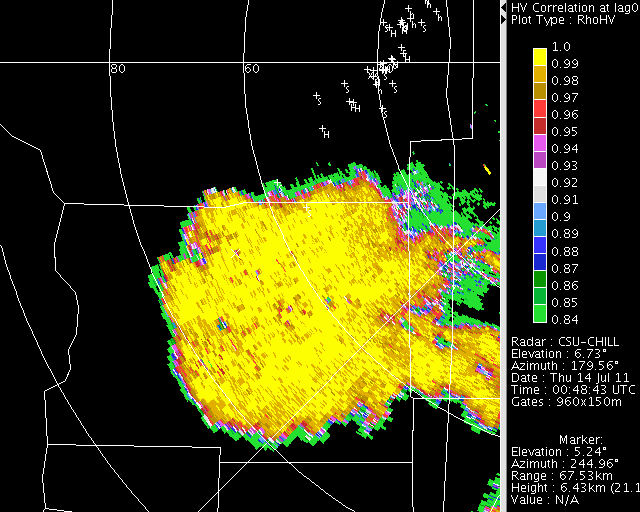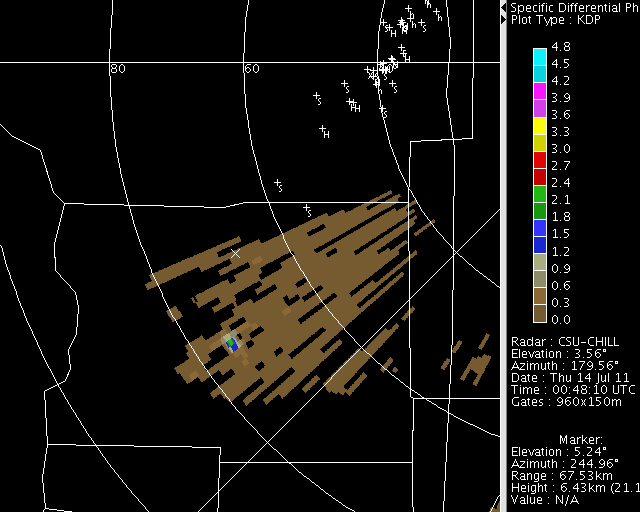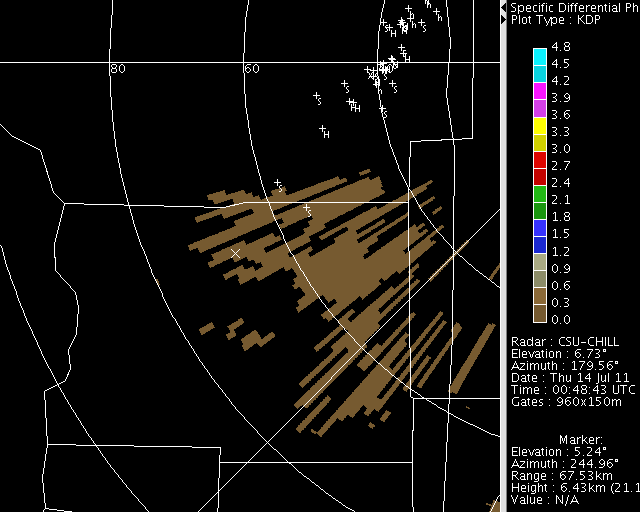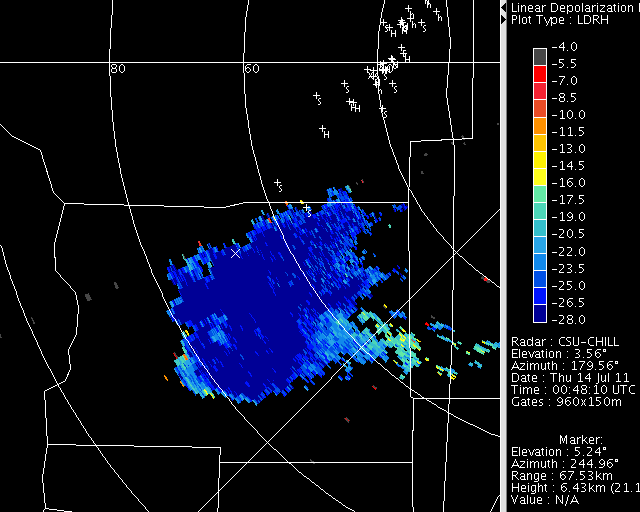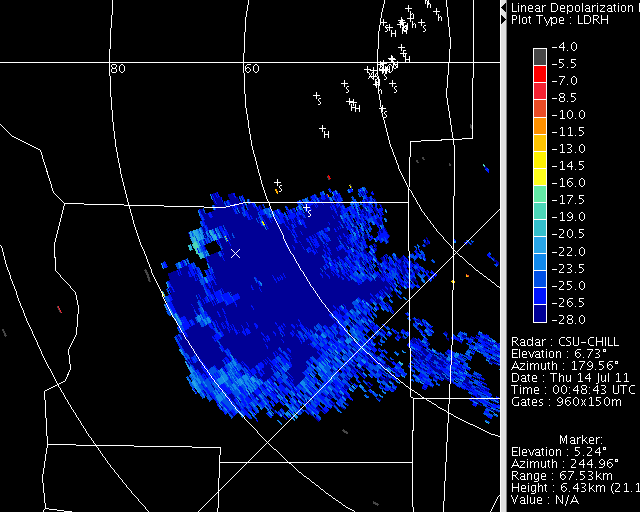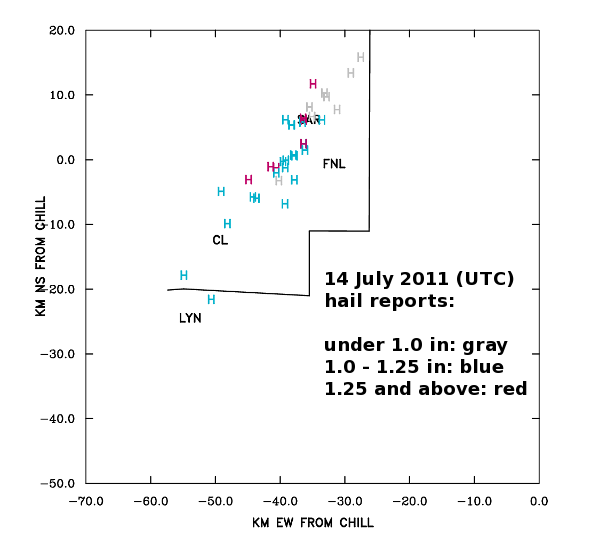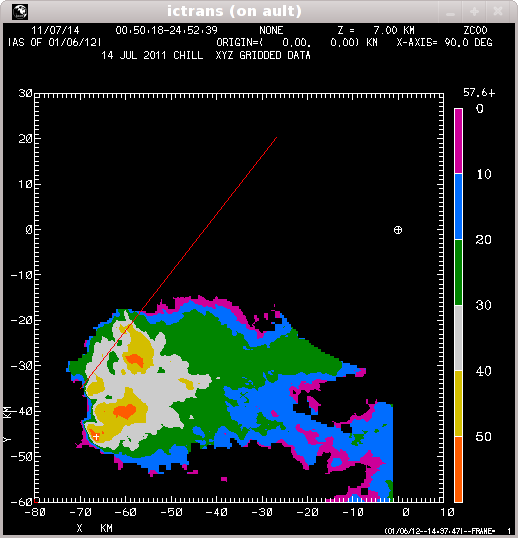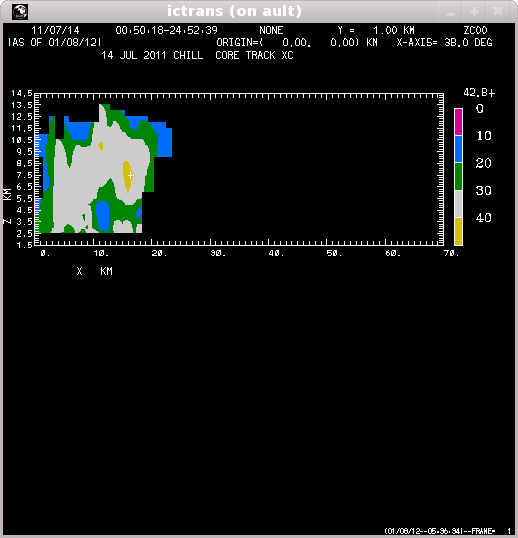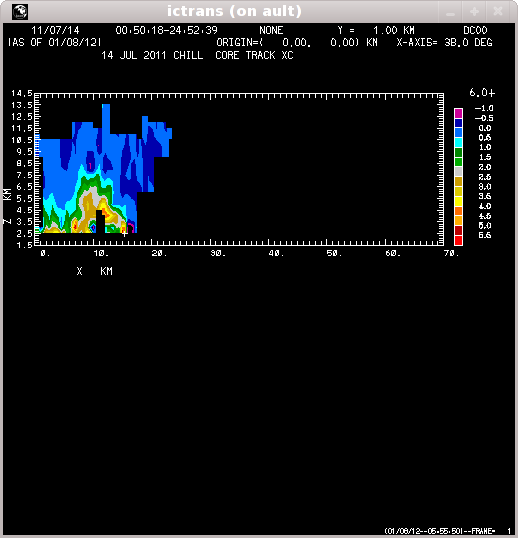14jul2011 hail case overview 1: Difference between revisions
Pat kennedy (talk | contribs) No edit summary |
Pat kennedy (talk | contribs) No edit summary |
||
| Line 188: | Line 188: | ||
==CAPPI plots: 7km MSL reflectivity== | ==CAPPI plots: 7km MSL reflectivity== | ||
Based on the 00 UTC DNR sounding on 14 July, the ambient temperature at 7 km MSL was approx -11 C; the moist adiabatic temperature at this level was ~ -5 C. The following sequence of plots extends beyond the VCHILL PPI sequences shown earlier. (Those were directed primarily at the period leading up to the NWS warning issuance). During the CAPPI plot period, the echo core of interest tracked along an essentially straight line path. The red line in the CAPPI plots is located along this core motion track. | |||
<center> | <center> | ||
<imgloop delay=400 imgprefix="http://www.chill.colostate.edu/anim/14jul2011_hail_manu_1/" width=518 height=538> | <imgloop delay=400 imgprefix="http://www.chill.colostate.edu/anim/14jul2011_hail_manu_1/" width=518 height=538> | ||
c7z1.png | |||
c7z2.png | c7z2.png | ||
c7z3.png | c7z3.png | ||
| Line 209: | Line 210: | ||
==Rotated vertical XC plots: reflectivity== | ==Rotated vertical XC plots: reflectivity== | ||
The following vertical cross-sections were located along the red line shown in the CAPPI plots using the CEDRIC REMAP procedure. It appears that the vertical structure of the storm may have been sampled well enough to support hydrometeor identification processing. | |||
<center> | <center> | ||
<imgloop delay=400 imgprefix="http://www.chill.colostate.edu/anim/14jul2011_hail_manu_1/" width=518 height=538> | <imgloop delay=400 imgprefix="http://www.chill.colostate.edu/anim/14jul2011_hail_manu_1/" width=518 height=538> | ||
| Line 230: | Line 232: | ||
==Rotated vertical XC plots: Zdr== | ==Rotated vertical XC plots: Zdr== | ||
The next series of plots shows the Zdr field in the same vertical cross section. The development of a hail signature reaching the surface can be seen. | |||
<center> | <center> | ||
<imgloop delay=400 imgprefix="http://www.chill.colostate.edu/anim/14jul2011_hail_manu_1/" width=518 height=538> | <imgloop delay=400 imgprefix="http://www.chill.colostate.edu/anim/14jul2011_hail_manu_1/" width=518 height=538> | ||
Revision as of 17:07, 9 January 2012
NWS Warning Overview
Meeting held at BOU with Eric on 7 September 2011. A replay of KFTG data and products (VIL, etc.) was done. Suspicions that storm needed a warning probably were developing during the 0104:43 volume; the decision to issue the warning was made during the 0109:21 KFTG volume. The following 3D GRAnalyst plot shows the 53-55 dBZ surface (semi-transparent), and the 60 dBZ syrface (solid purple) in the KFTG 0109:21 (warning issuance) volume:
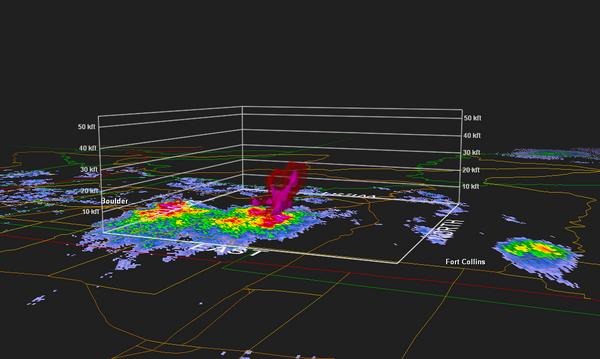
The next plot is a similar image generated from the CHILL 0109:49 volume:
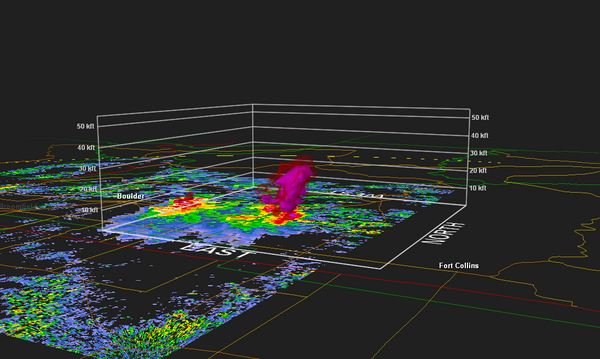
NWS Training on dual-pol hail detection
From module presented on the web, two primary areas of interest are where the PPI sweep intersects the environmental 0C and -20C levels. Basic storm structure is diagnosed using conventional reflectivity and radial velocity fields. Polarimetric moments of interest are Zdr, rhoHV and Kdp. (No mention made of Hydrometeor Classification Algorithm (HCA) products).
PPI loops during the warning decision-making phase
Reflectivity loop near 0C sounding temp level. The VCHILL base map symbols are: (h) non-severe hail diameter CoCoRaHS report; (H) severe (1 inch or larger) CoCoRaHS report; S=SPC/NCDC severe-class hail report.
|
|
||
|
Reflectivity loop near -20C sounding temp level.
|
|
||
|
|
|
||
|
|
|
||
|
|
|
||
|
|
|
||
|
|
|
||
|
|
|
||
|
|
|
||
|
|
|
||
|
|
|
||
|
|
|
||
|
Spotter observations and NLDN data
Spotter confirmation of severe hail production took place primarily after the storm crossed into Larimer County. The CG lightning polarity also became predominately positive during this portion of the storm's history:
|
|
||
|
Surface verification of polarimetric signatures
(Low level polarimetric patterns are also emphasized in the NWS training materials).
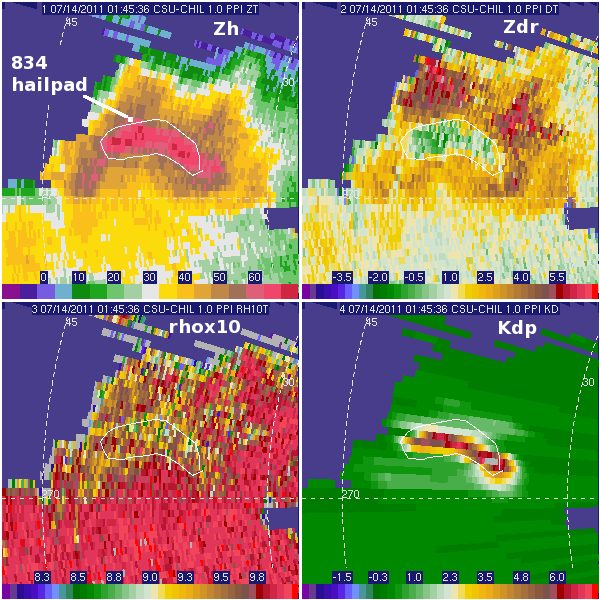
Hail impacts between 0140 and 0147 UTC; largest diameter=1.25 inches; leaves shredded.
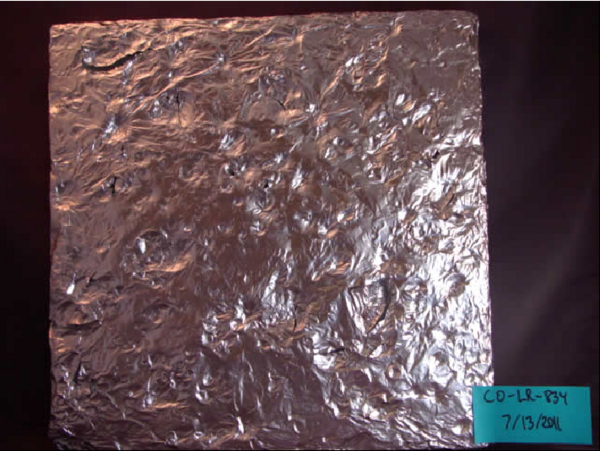
Hail impacts after pad change. Pad exposure time reported as 0147 - 0150 UTC. Impacts still sufficient to tear foil.
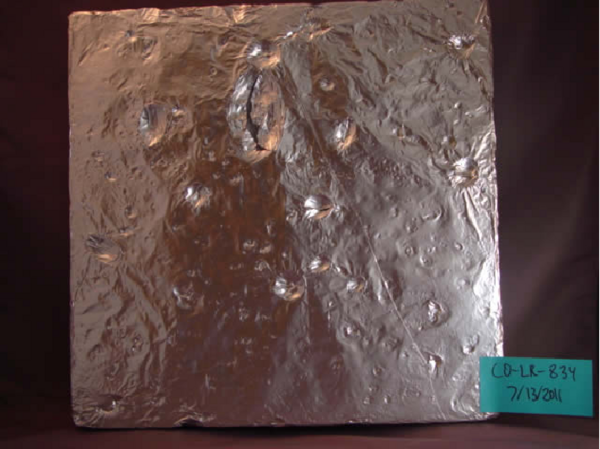
CAPPI plots: 7km MSL reflectivity
Based on the 00 UTC DNR sounding on 14 July, the ambient temperature at 7 km MSL was approx -11 C; the moist adiabatic temperature at this level was ~ -5 C. The following sequence of plots extends beyond the VCHILL PPI sequences shown earlier. (Those were directed primarily at the period leading up to the NWS warning issuance). During the CAPPI plot period, the echo core of interest tracked along an essentially straight line path. The red line in the CAPPI plots is located along this core motion track.
|
|
||
|
Rotated vertical XC plots: reflectivity
The following vertical cross-sections were located along the red line shown in the CAPPI plots using the CEDRIC REMAP procedure. It appears that the vertical structure of the storm may have been sampled well enough to support hydrometeor identification processing.
|
|
||
|
Rotated vertical XC plots: Zdr
The next series of plots shows the Zdr field in the same vertical cross section. The development of a hail signature reaching the surface can be seen.
|
|
||
|
